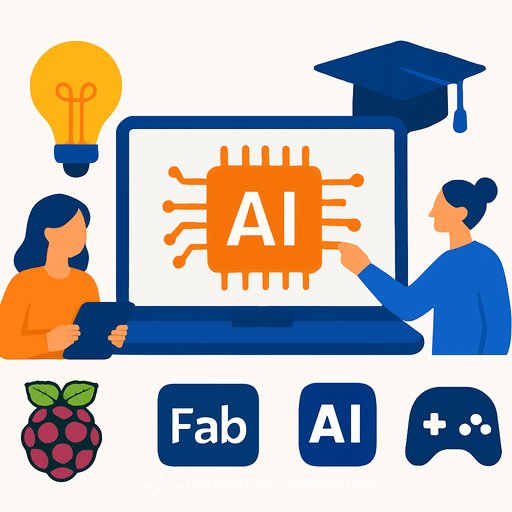Google to invest $30M in AI-powered education over the next three years
11 November 2025, 20:50 (UTC+04:00) - Google announced a $30 million commitment to support organizations using artificial intelligence in education. Early recipients include the Raspberry Pi Foundation, Fab AI, and Playlab.
For educators, this signals more resources to test practical AI tools, expand hands-on computing, and bring AI literacy to the classroom. The details will roll out over time, but planning now will help you move quickly when programs open.
Why this matters for your classroom or campus
AI is showing up in lesson planning, feedback, accessibility, and student projects. Funding like this can reduce barriers for schools that need proof, training, and low-cost hardware before they commit.
- Teacher workload: Tools that draft rubrics, give formative feedback, and prep differentiated materials.
- Student learning: AI-supported tutoring, writing support, and project-based learning with physical computing.
- Access and equity: More affordable kits and curricula for after-school clubs and community programs.
- Evidence and guardrails: Better research, evaluation, and guidance on safe, effective classroom use.
How to prepare your school or program
- Map your needs. Where could AI save hours without lowering expectations? Start with one subject or grade band.
- Pilot responsibly. Pick one or two tools, set a 6-8 week timeline, define success metrics, and gather student/teacher feedback.
- Write a clear AI use policy. Cover data privacy, academic integrity, transparency to families, and acceptable use.
- Plan professional learning. Short, recurring sessions beat one-off workshops. Include classroom examples and templates.
- Get your infrastructure ready. Check device availability, filters, sign-in, and data-sharing settings.
- Line up partners. Maker spaces, libraries, and local nonprofits can help extend impact outside school hours.
Questions to ask any AI vendor or grantee program
- Privacy: What data is collected? Is student data used to train models? How do we delete it?
- Alignment: Which standards and accommodations does it support? Can we customize prompts and rubrics?
- Evidence: What outcomes have been measured, with what sample sizes?
- Equity: Does it work well on low-cost devices and with limited bandwidth? Is there an offline mode?
- Total cost: What are the ongoing fees, training time, and device needs beyond the first year?
Where to track updates
Watch official channels for grant details and program rollouts:
- Google Blog for announcements and AI education updates
- Raspberry Pi Foundation for hardware, curriculum, and community programs
If you're planning staff upskilling or a pilot cohort, you can browse role-based AI course paths here: AI courses by job.
The takeaway: the money is coming, and the window will move fast. Get your needs, pilots, and policies in place now so you can act the moment applications open.
Your membership also unlocks:






